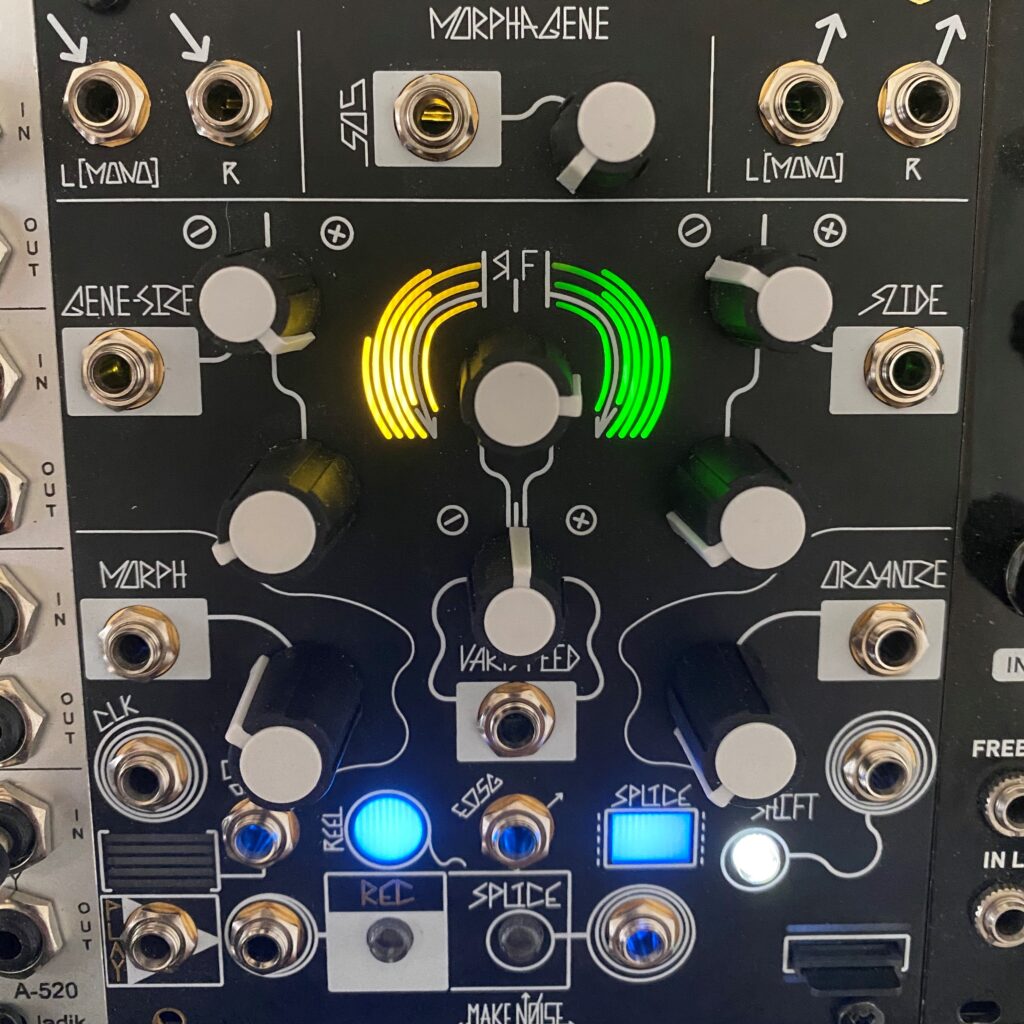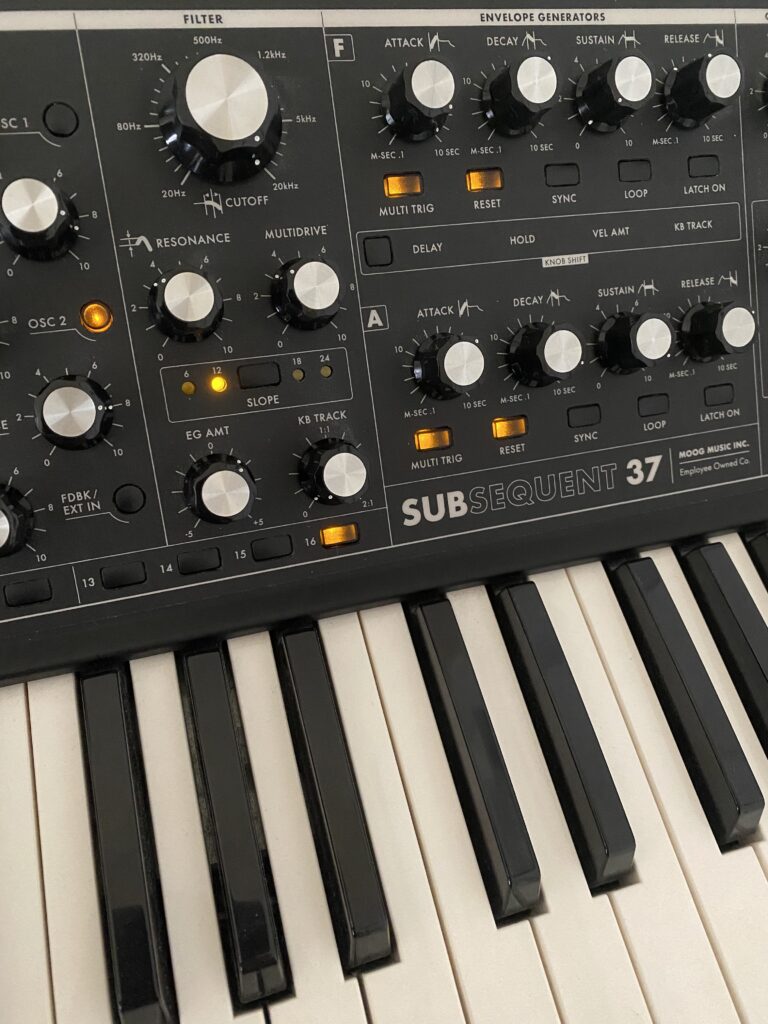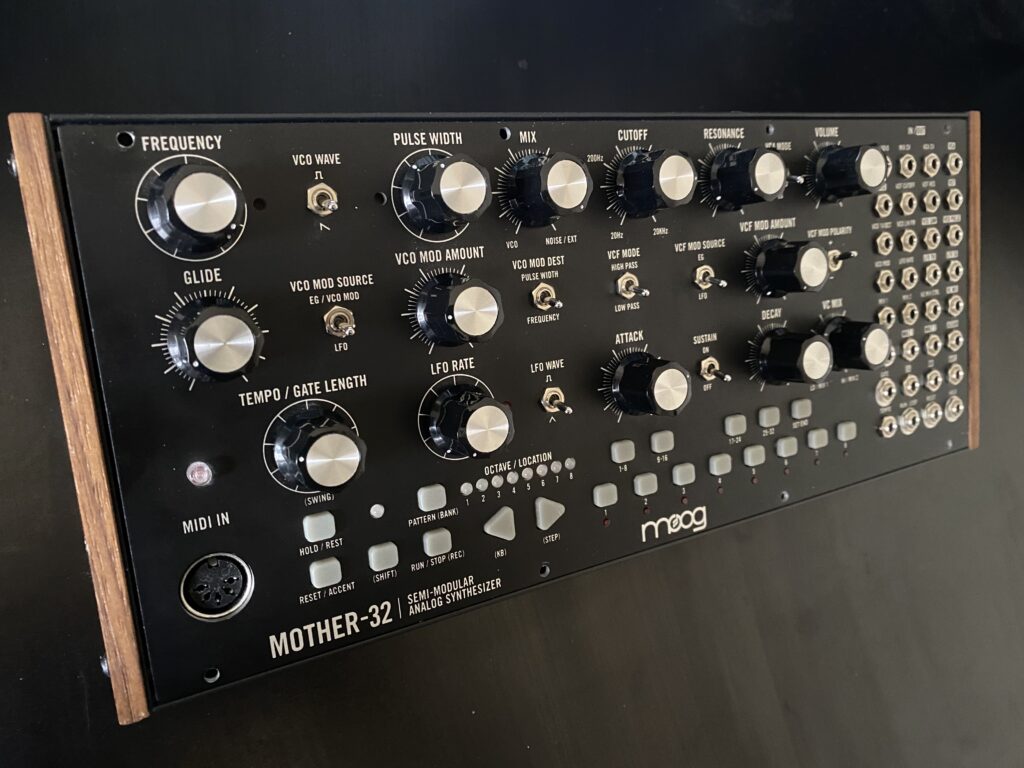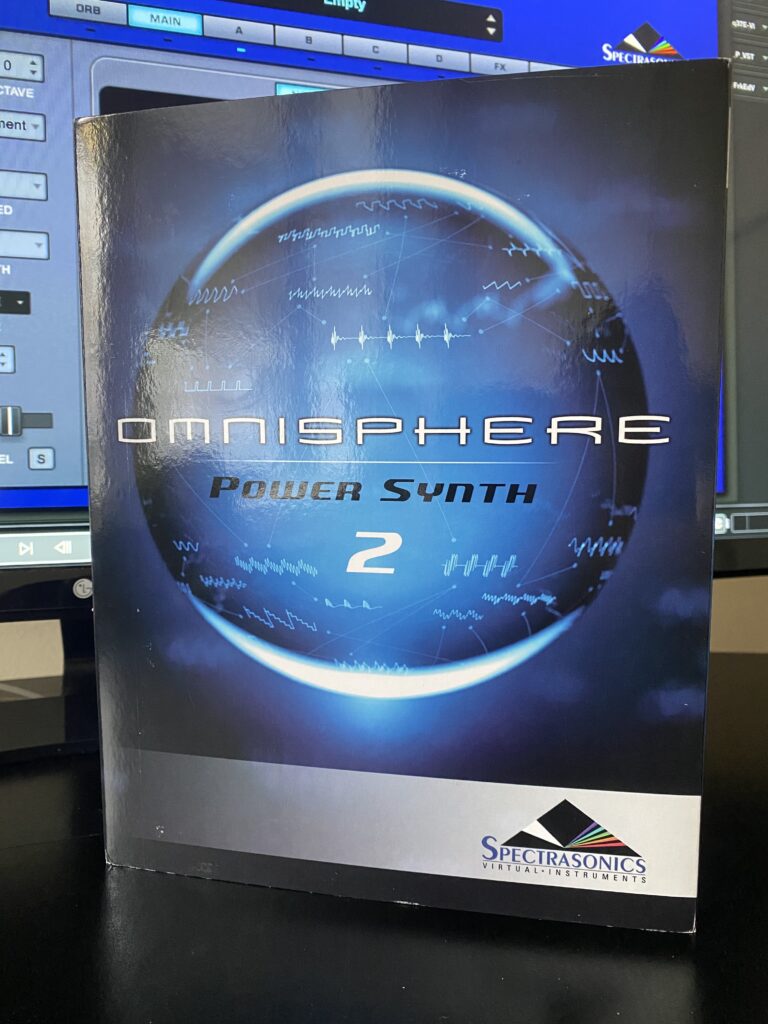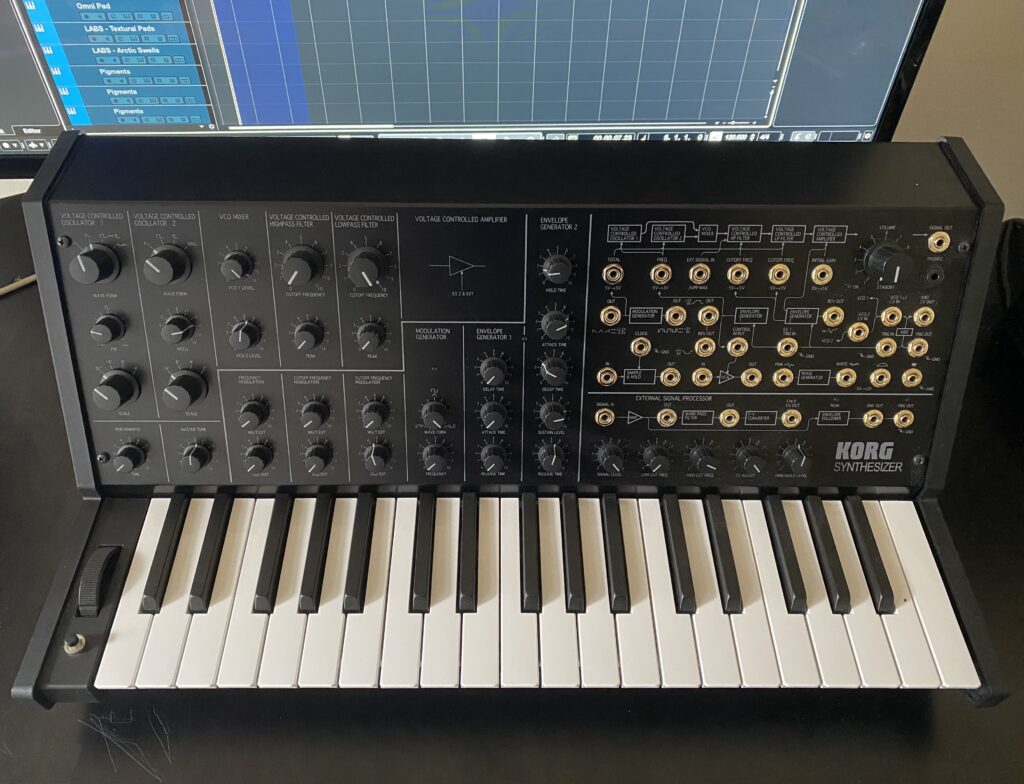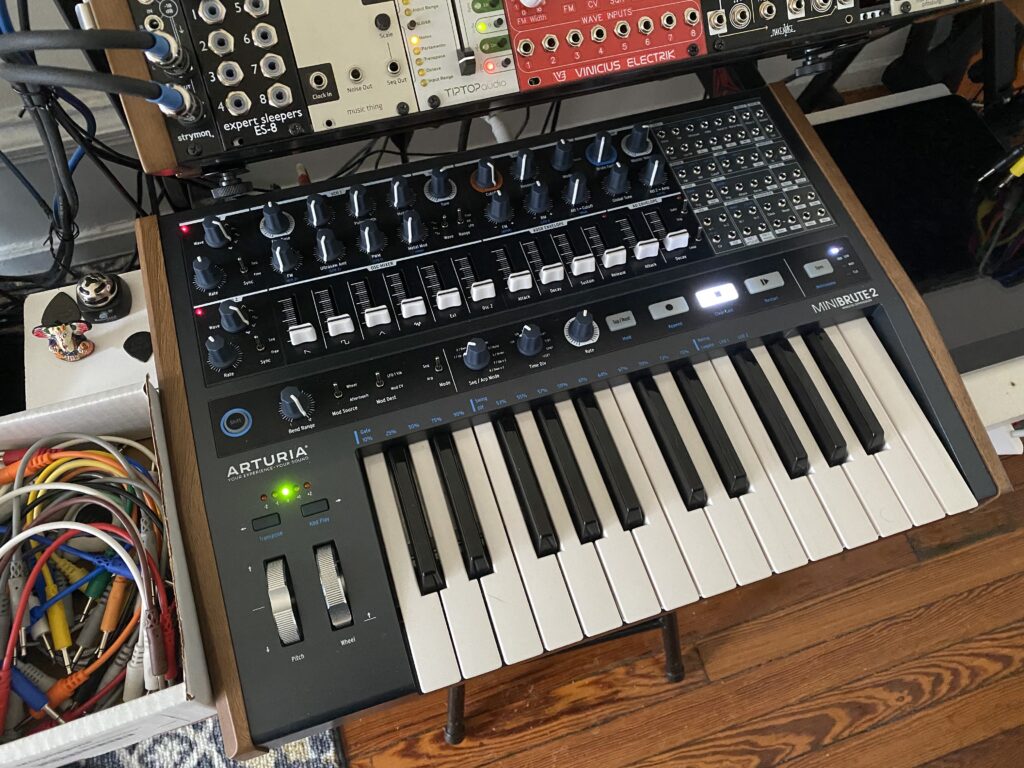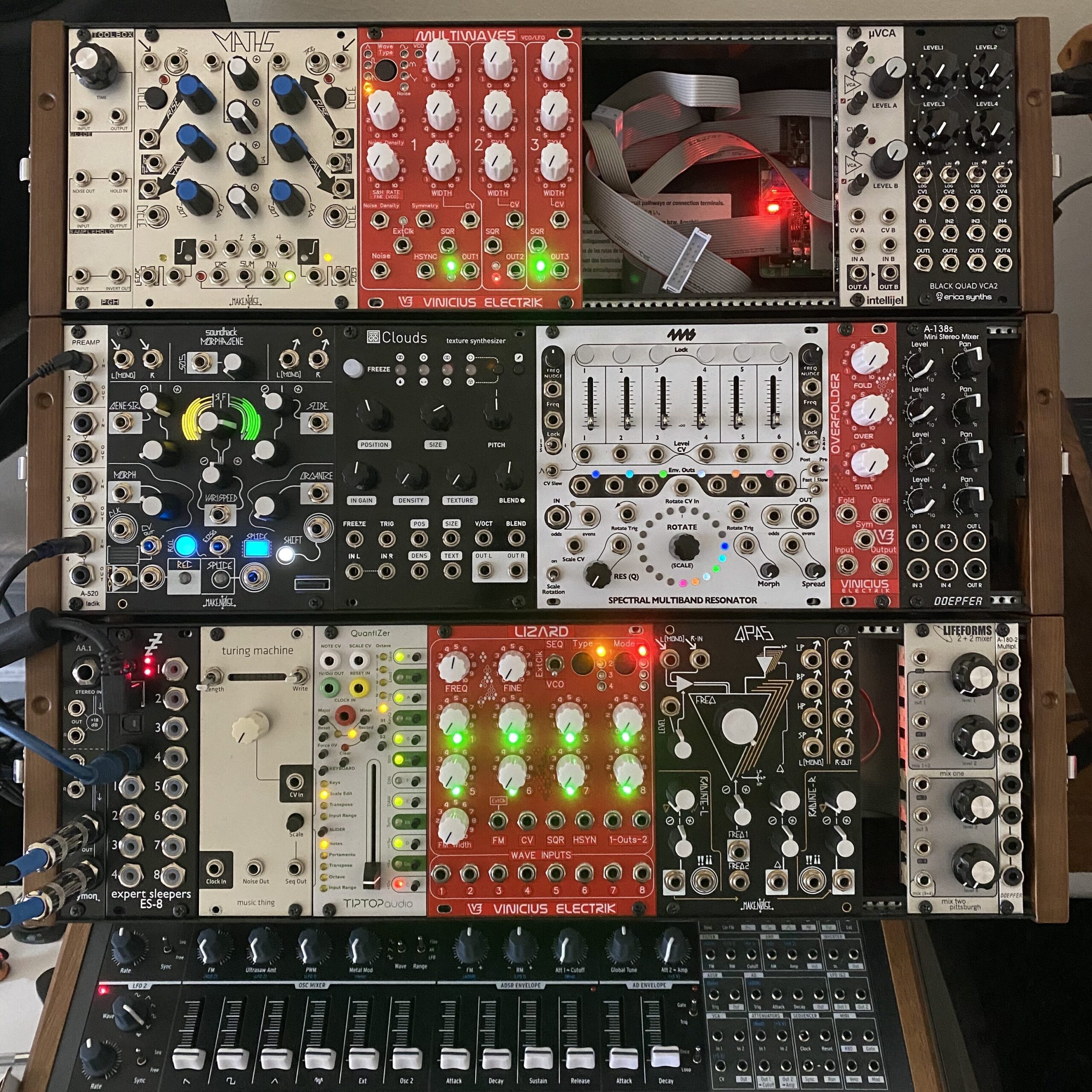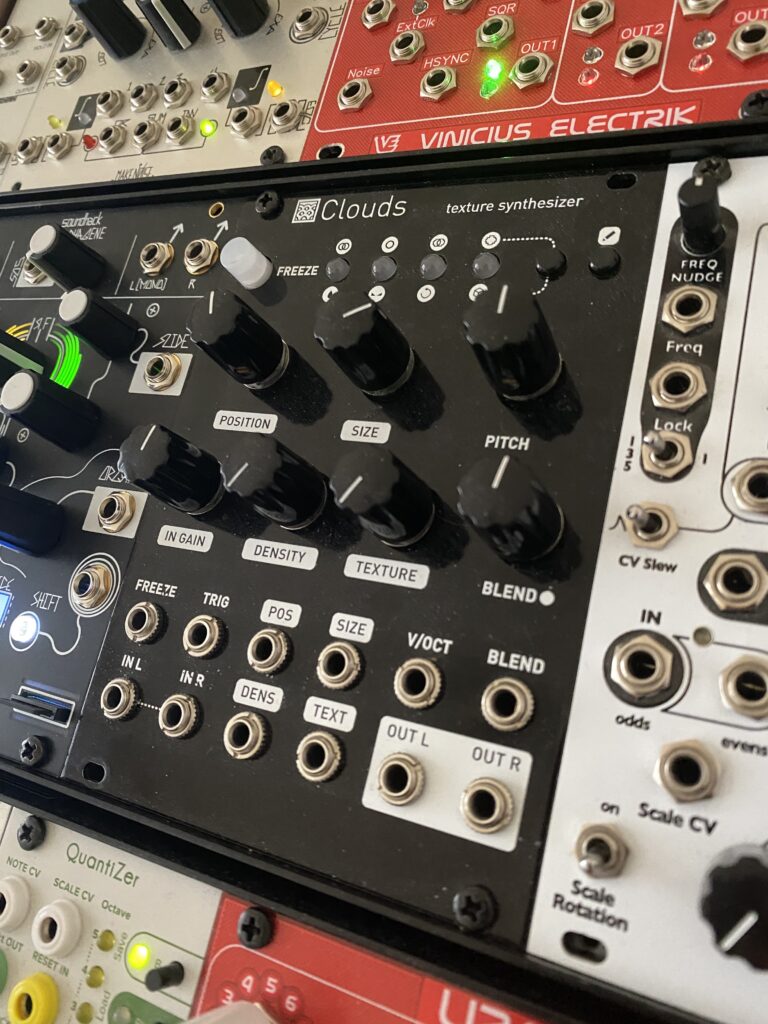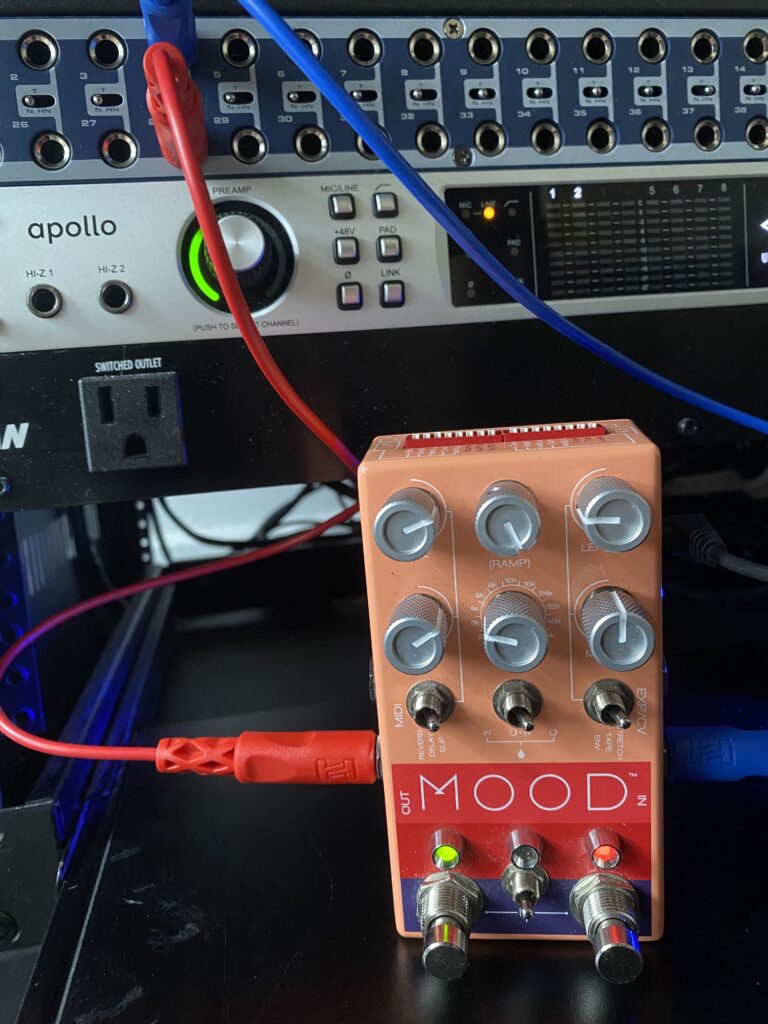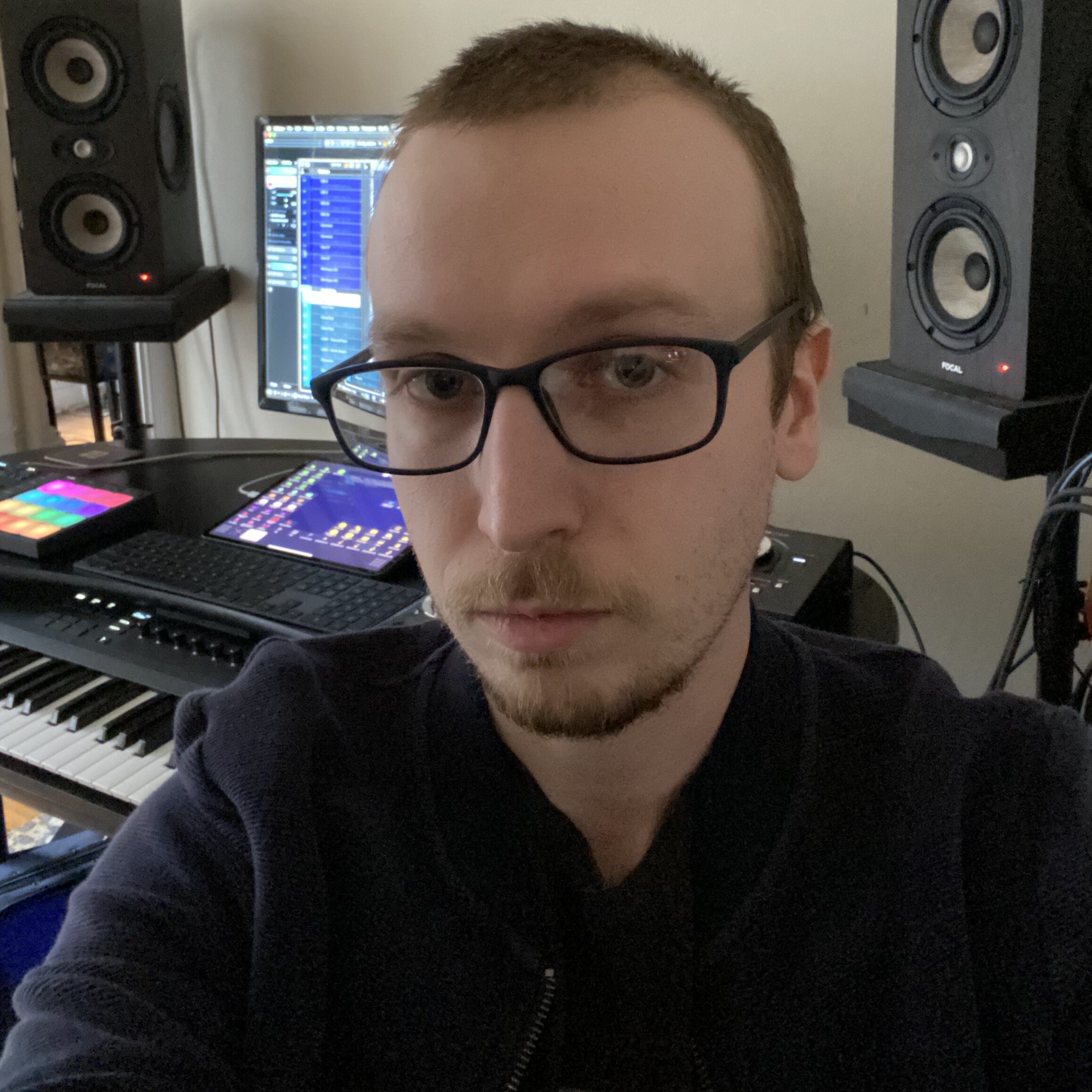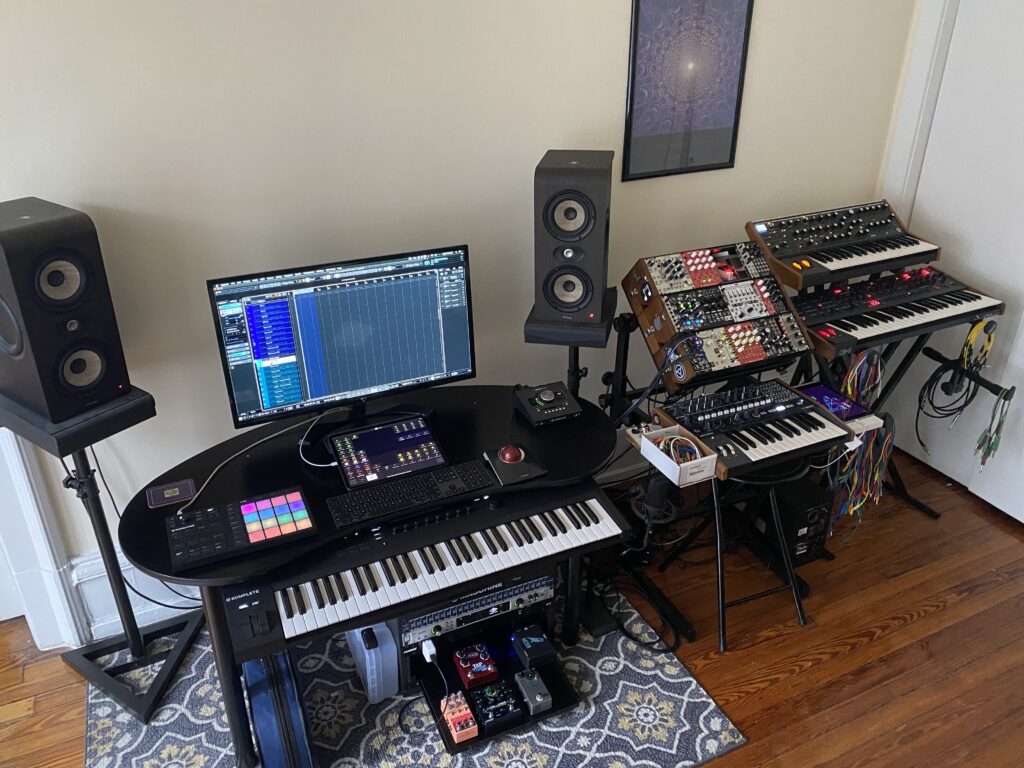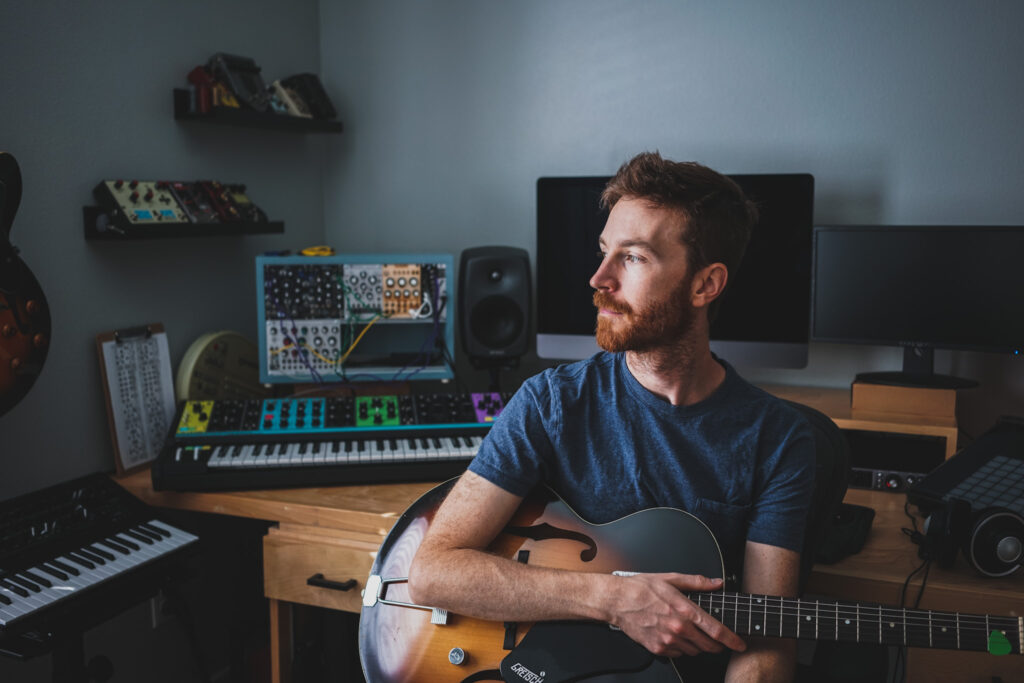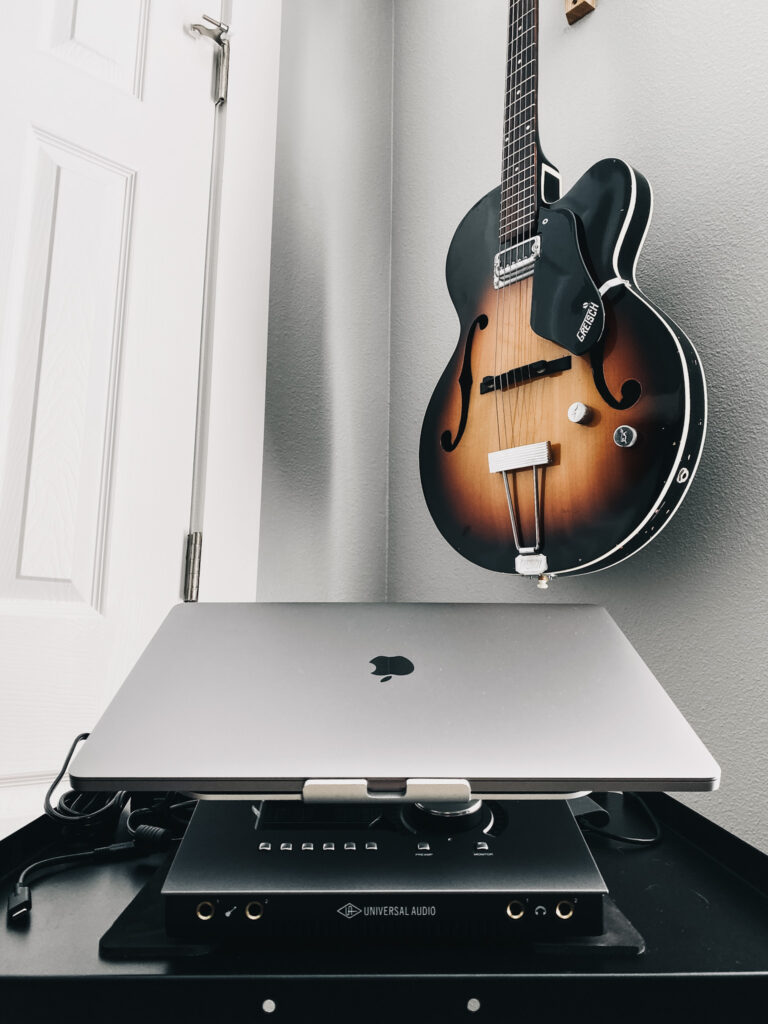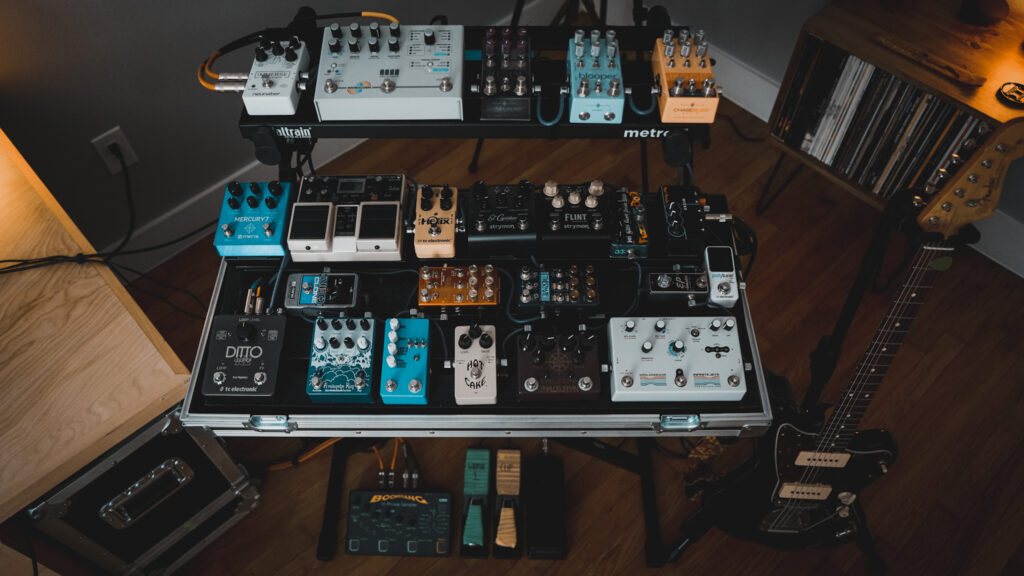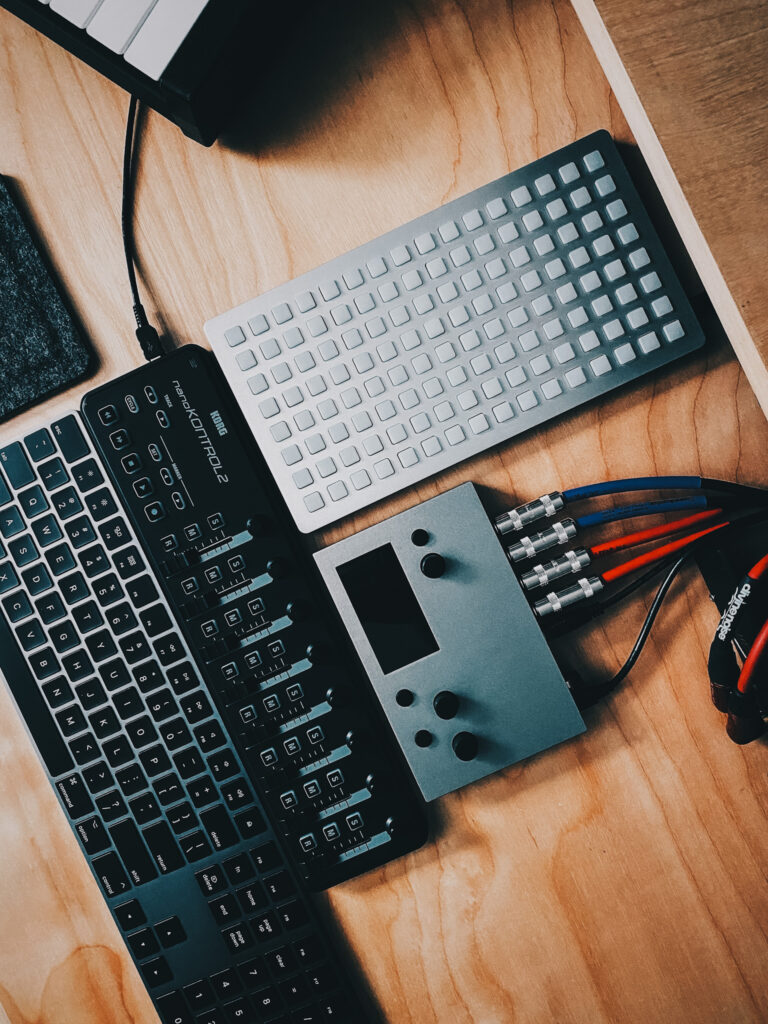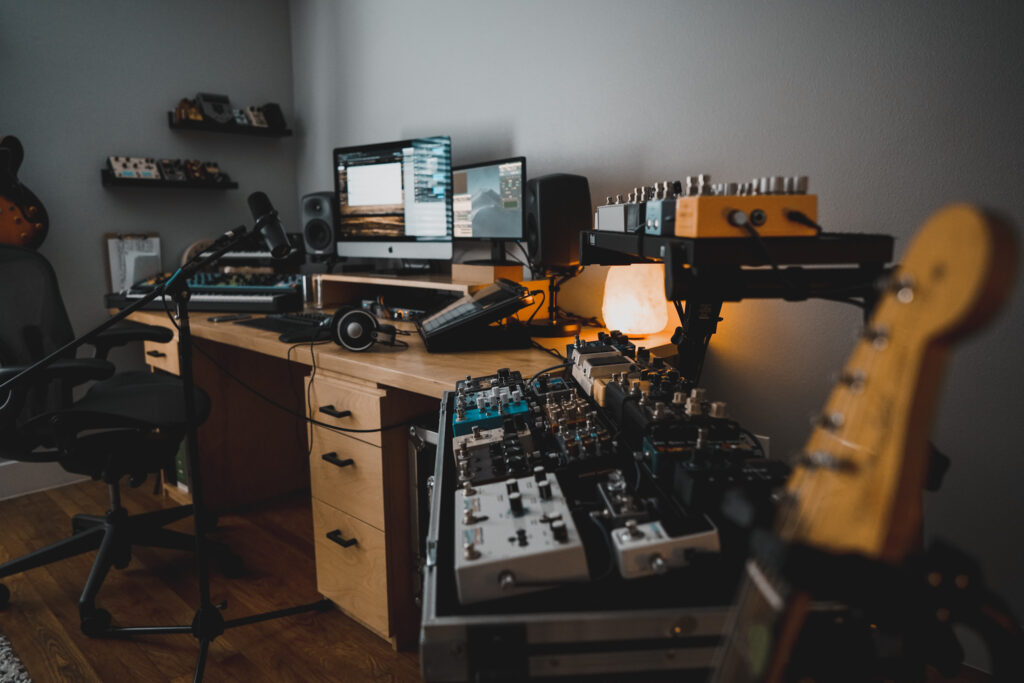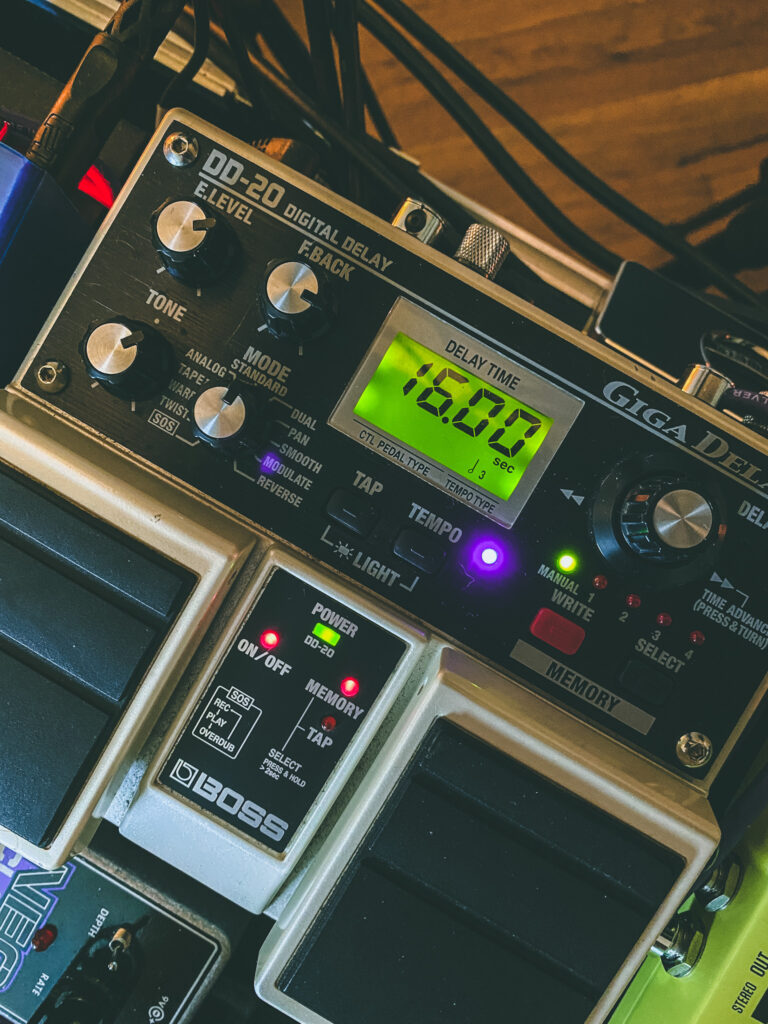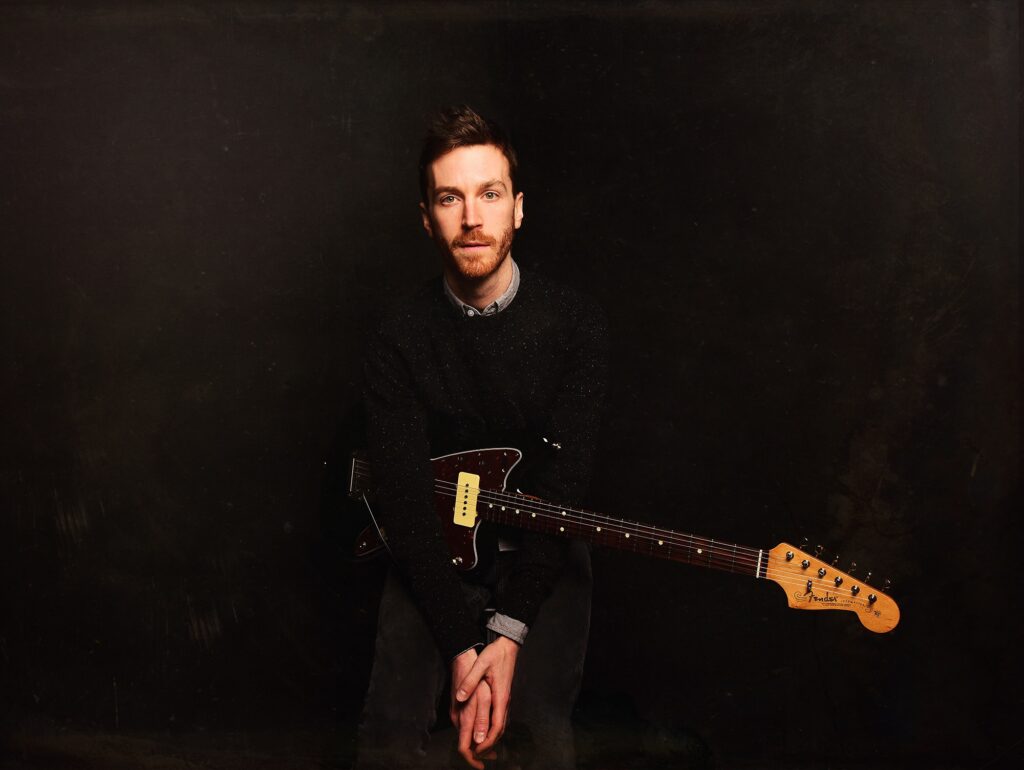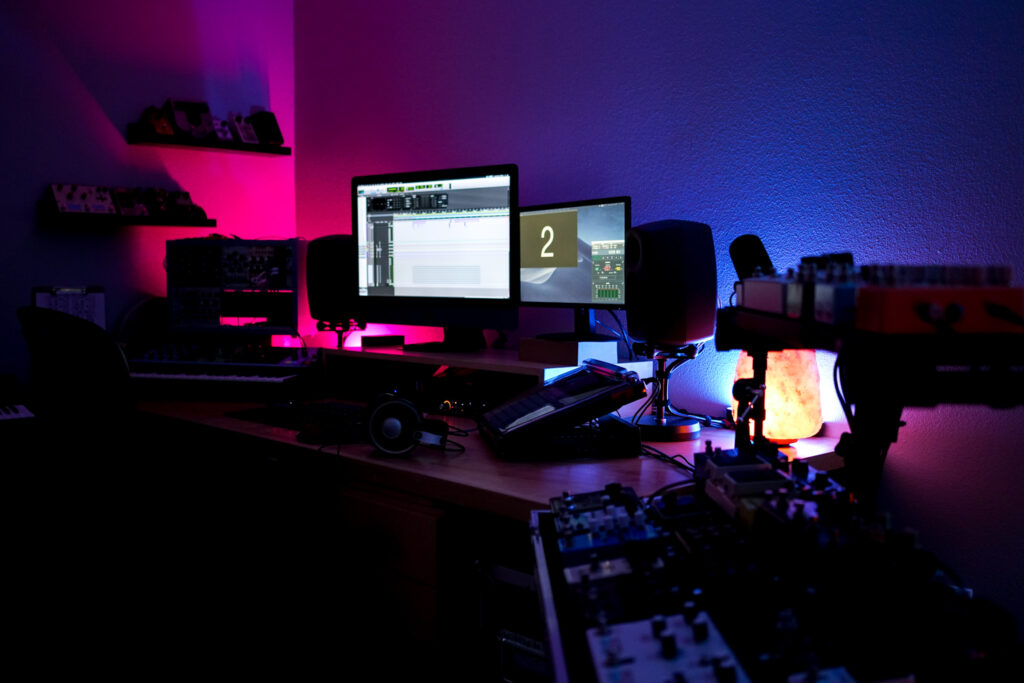1. Favourite knob/fader/switch on a piece of gear and why?
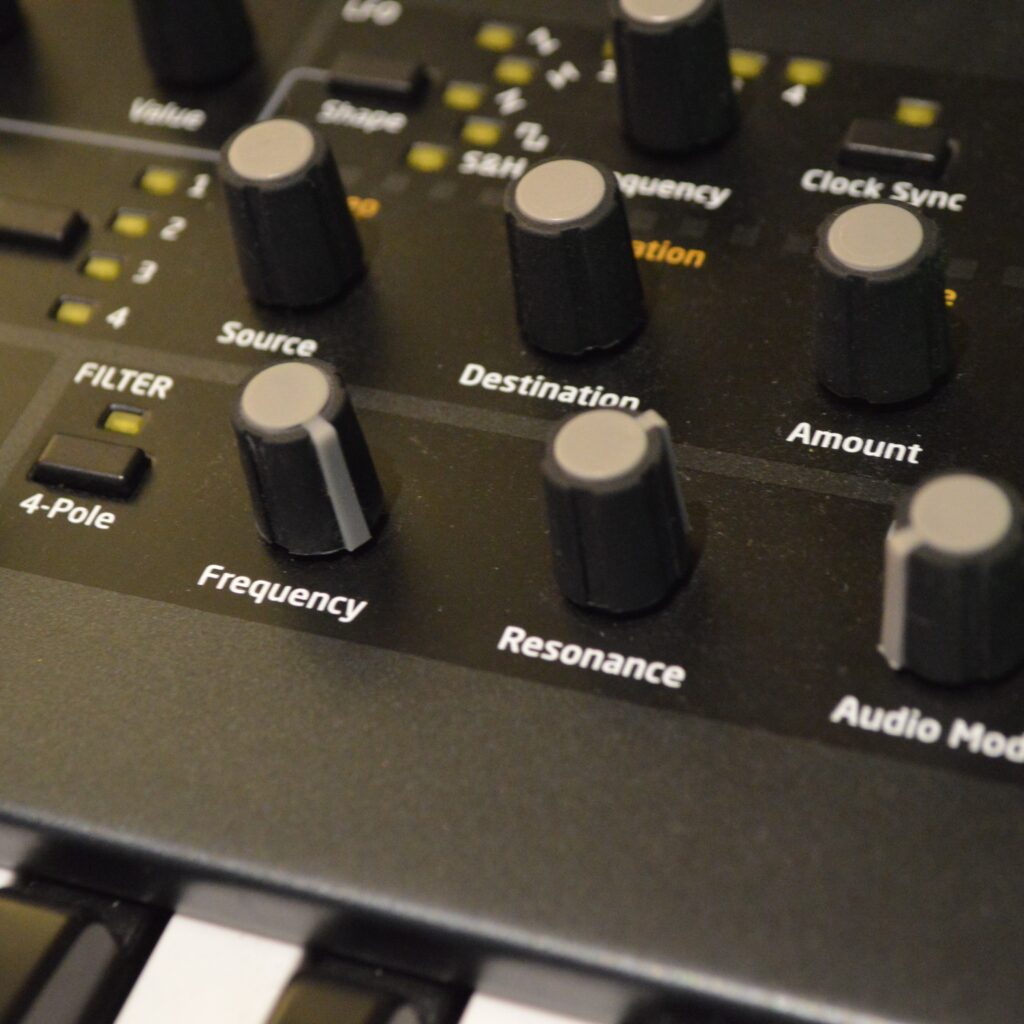
My favorite knob is actually a combination of knobs; cutoff frequency (LPF in particular) and Resonance. Coming from a jazz saxophonist background, I did not have any interest in gear until my mid 20’s when I was at a music store with a good friend of mine. We sat down at the synths, found my way to a Microkorg XL, again with no real interest in them, and then I somehow managed to play around with the filter knob. I was mind-blown how cool sweeping a filter was! It was so space-sounding and magical and a sound I didn’t expect to find. I sat there for 30 minutes just playing a chord, letting it sustain while I swept the filter/resonance to get the dreamy space sound. The picture is of my Mopho x4, which has a stunning LPF Cutoff and Resonance combo.
2. Do you have an ‘almost’ perfect bit of kit? What would you change?
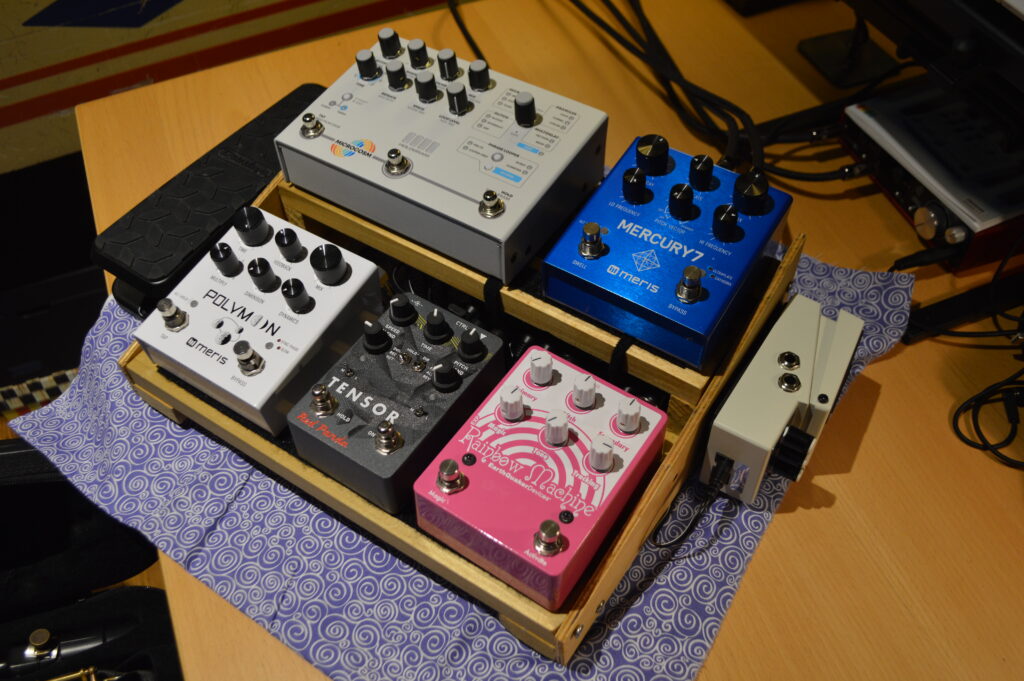
I love my pedalboard! Again, as a saxophonist, there was no clear tutorial I could find on YouTube to figure out how to get the sounds I wanted to now achieve using a saxophone. I started experimenting with pedals in 2017, and have found a great balance between in-home solo ambient jamming and live performance utility. At home and by yourself, you can try any pedal/combination for anything, but playing with a live band, especially in a jazz setting, it becomes difficult to find the right pedals. The saxophone is a very difficult instrument to use with pedals live because most of the sound still will come acoustically. Therefore, I had to choose effects that would compliment my sound rather than change it. Looping makes a cool background in live settings, delay/reverb always nice because it lingers in the spaces of your playing, and the right kind of pitch shifting will add depth to your playing. No dirt here because it doesn’t really work well live because you’ll basically only hear the acoustic sound.
3. What setup do you bring on holiday/tour/commute etc.?
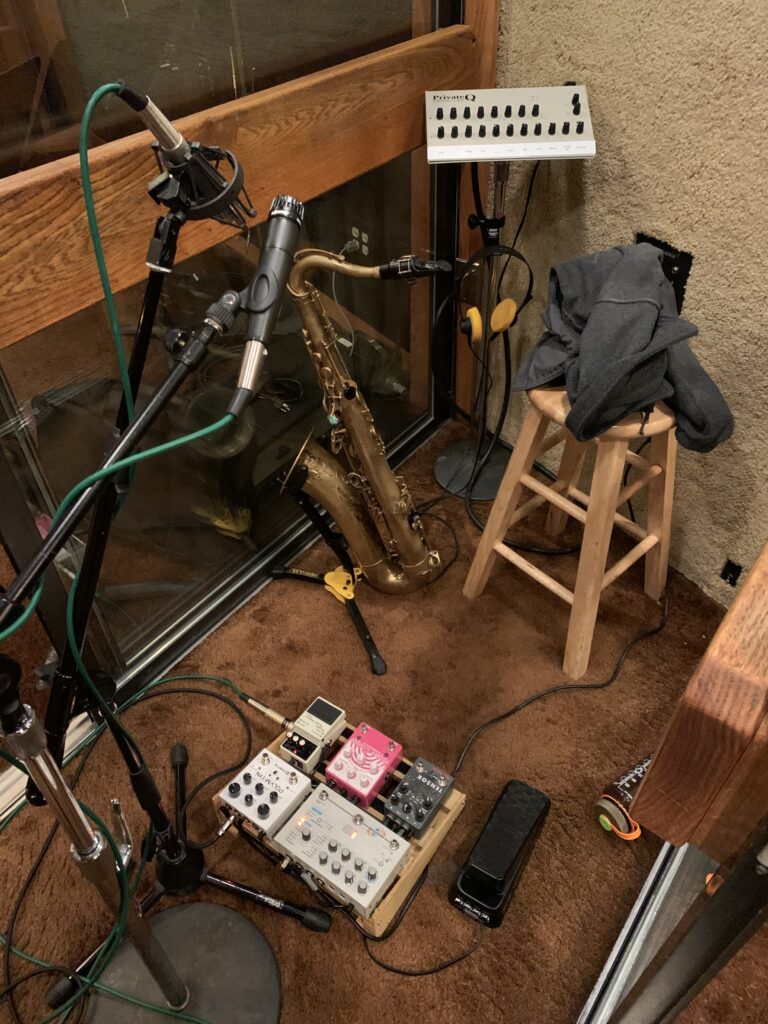
With the pandemic going on, there has not been much opportunity to travel for musical reasons however, I was able to go and record my dream album in Washington D.C. back in December. It is an all-original music album of mine where I utilize the same pedalboard in the picture above in combination with my saxophone. When traveling home for holidays, I usually only bring the saxophone. I don’t end up playing much but will sometimes get some practicing/noodling in to try and stay in shape. The picture is of my set up from the album recording back in December
4. What software do you wish was hardware and vice versa?
To be honest, I don’t use too much software as far as instruments/effects are concerned. I mostly just use Ableton to record my solo-ambient music and lightly mix/master it there. I prefer the hardware due to my tactile way of approaching music. I learn best through my sense of touch and it is crucial for me when playing/writing music. This is probably why I am so bad at vocals, but also why “button” oriented instruments like saxophone, piano/synth, pedals are my instruments that I use the most.
5. Is there anything you regret selling… or regret buying?
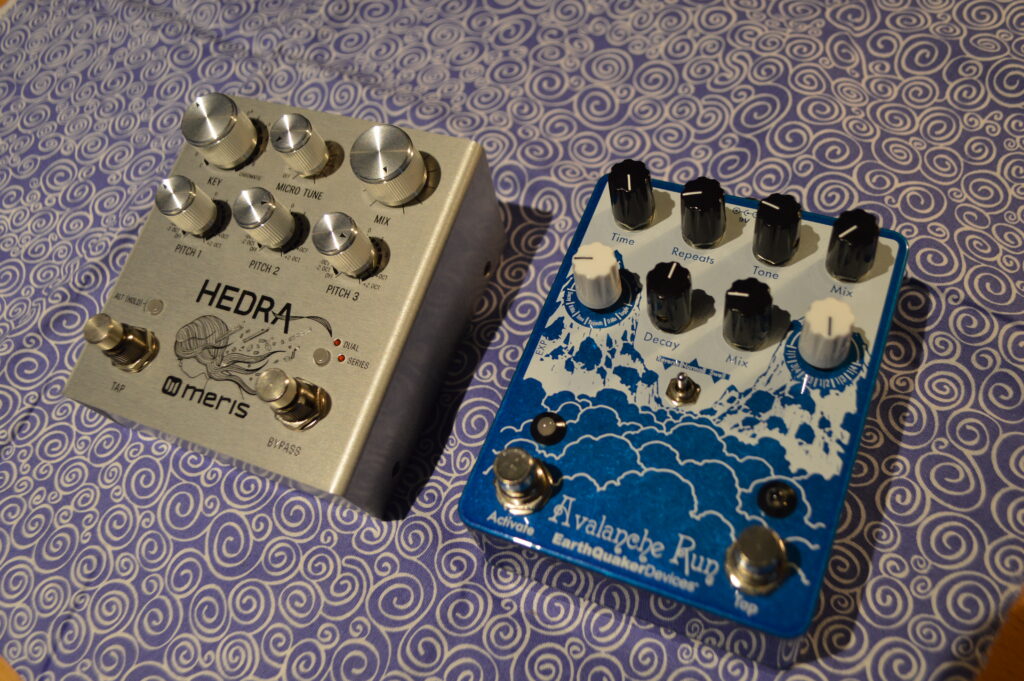
There is nothing that I regret buying. I take a very long time thinking about what gear I want and why I want it so I never really have impulse purchases that I regret later. I do have a few pedals that I don’t often use; for example, the Avalanche Run and Hedra. However, they are not regrets as I still will pull them out from time to time to create a song or two. They are just not as crucial for most of the things I do with my music. I also have never sold a piece of gear so I can’t really say I regret selling anything, ha!
6. What gear has inspired you to produce the most music?
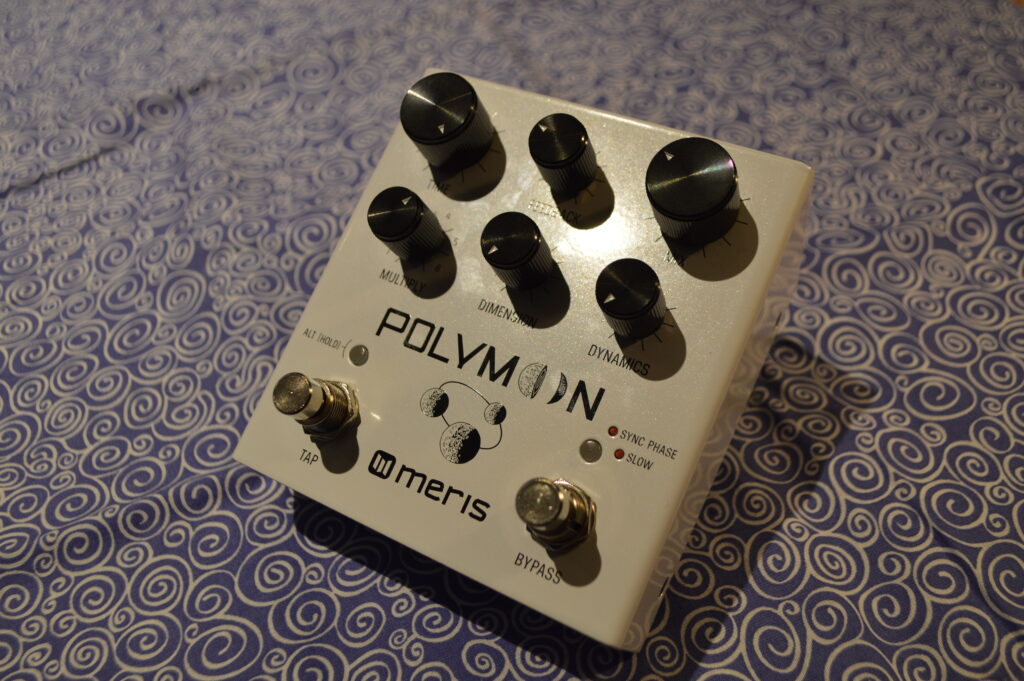
Finally, an easy question to answer! The Polymoon by Meris is ABSOLUTELY 100% the gear that has inspired me to produce the most music. It has so much to offer, especially when you run it at the end of your chain. It can do the simple delay stuff, but also has a gorgeous phaser-verb when you crank the dimension. Putting it 100% wet mix will give what I consider the most beautiful sound a piece of gear can offer to this day. Not only that, but it has a wealth of modulation options that I use in so much of my music. Most notably, the octave up/down pitch shifted delays add such a beautiful space-cruising sound to your song. Being in the end of the chain, after my loopers and everything else, you can manipulate your loops by doing any of those things mentioned above and it will really dynamically change your composition/jam.
7. If you had to start over, what would you get first?
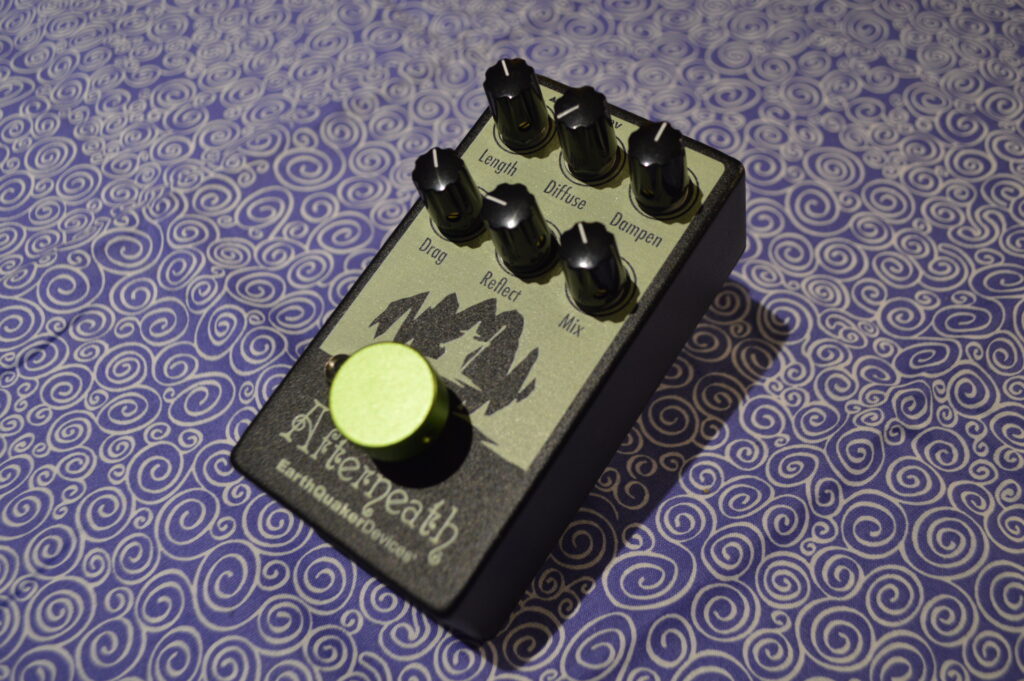
If I had to start over… this is a tough question to answer. My first purchase was the Afterneath by Earthquaker Devices, and it was probably the best thing I could buy to get into this stuff. I really wanted to find a way to stack multiple notes on saxophone as it is a monophonic instrument. Afterneath having the capabilities of having a really long/pronounced sustain, it was perfect for what I was trying to do. The only issue I ran into was when I would stack a chord of some sort, playing over the top of it would get added into the Afterneath. So going back, I would probably get the NS-2 by Boss and run it in conjunction with it. That way, I could stack my chords, then essentially mute my microphone so I could, acoustically, improvise/play over the top of my new chord. Also, I would buy a phaser, because as Stefan from the Pedal Zone has shown, running a phaser after the Afterneath is just beautiful and has that sweeping motion that first got me hooked in the first place.
8. What’s the most annoying piece of gear you have, that you just can’t live without?
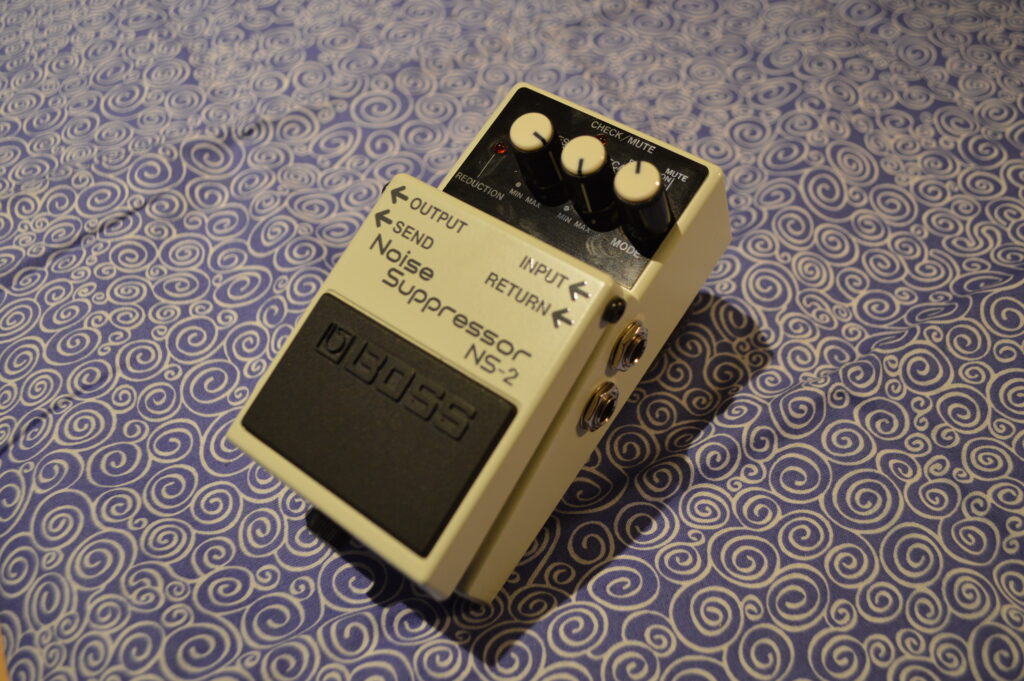
I don’t know if I would call it annoying per say, but I have found that the NS-2 by boss is absolutely necessary for probably any player who relies mostly on their acoustic sound. When playing live with a band, especially the louder bands, your microphone is going to bleed in all those drums, guitars, whatever. The NS-2 is SO useful with its gate function so it will only pick up whatever is directly in front of the mic. Not only that, but it cancels any feedback that I would get in those live settings which playing with a microphone will almost always give you (especially when using noisy effects). The only reason I would consider it slightly annoying is that because it takes up real estate (in my pedalboard picture you can see that I taped it to the side of the board) for something that I use basically as a one-trick always-on effect. However, it must be said that the NS-2 is a live-setting modified saxophonist’s biggest buddy.
9. Most surprising tip/trick/technique that you’ve discovered about a bit of kit?
I think the best trick I have learned about gear in terms of using gear as part of the compositional process is to experiment with your signal path and definitely put effects AFTER your loops. For example, having the Polymoon after my looper lets me change the composition so drastically that you almost wouldn’t believe it’s the same exact loop if I showed them separately. That is a very powerful thing to have at your disposal for those live gigs when a solo interlude to start the second set is warranted. Another idea is to put a pitch shifter after your loops so you can modulate to a different chord/key center to give you something new to play over the top of (this might require more parallel signal paths but I have done before and is very cool).
Artist Name
Tyler Cassidy (studbagl on youtube, Instagram, etc)
Genre
Adventure music, jazz, ambient.
Selfie

Where are you from?
I am originally from Fort Lauderdale, Florida, now living in Boston, Massachusetts.
How did you get into music
I played saxophone in middle school and was very neutral about it; it wasn’t fun or boring. But then my first day in high school in 2006, my grandad picked me up, who was the only other musician in the family. He had the music of Richie Cole and Charlie Parker playing on his CD’s and I couldn’t believe my ears. I didn’t know these things were possible on a saxophone. So when I got home, I opened up YouTube and listened to everything I could. It all spiraled from there.
What still drives you to make music?
I love writing music! As I said previously, I wrote an album and got to record it with a bunch of my friends and some new people back in December. The feeling of writing songs and then having them come to life is nothing less than fulfilling; you feel proud, happy, and satisfied all at the same time. This particular album was special for me because I got the chance to record live with a huge band. It was 10 people, myself on saxophone/effects, an electric guitarist, nylon/steel-string/electric guitarist, pianist, bassist, drummer, string trio and person conducting the string trio. It was magical and I can’t wait to write more and bring them to life.
How do you know when a track is finished?
So this question is better answered for my solo ambient stuff. Being a live-oriented musician, I usually one-take all of my compositions. So whatever you are listening to was all done live and in one track. It basically boils down to if I was satisfied with it or not and that’s how I will know if it is finished. Most of these compositions are live jams, some have a little more planning, but never usually that much.
Show us your current studio
I call it the LazerMaze

Best creative advice I have ever heard?
Trust your ears. If your ears say it’s good, it is good. Sometimes it’s easy to let your brain get in the way when it says, “No, this definitely shouldn’t work” or “This wouldn’t make sense to go from this chord to this chord”. Your ears should always be trust! We are musicians after all.
Promote your latest thing… Go ahead, throw us a link.
The latest thing I have out is “Gentle Shore” which is a solo ambient album of mine. On my studbagl.bandcamp.com you can find 3 of my solo ambient albums as well as an album I did as a bandleader back in 2017 in Washington D.C. Definitely want to look out for the new album coming out in summer 2021 that I just recorded though; it blends all the jazz, ambient, post-rock, romantic adventure music that makes up my imagination into one.
[Editor: Do you have a favorite tip, trick or way of working with any of the gear from this interview?
Then throw us a comment below…]
